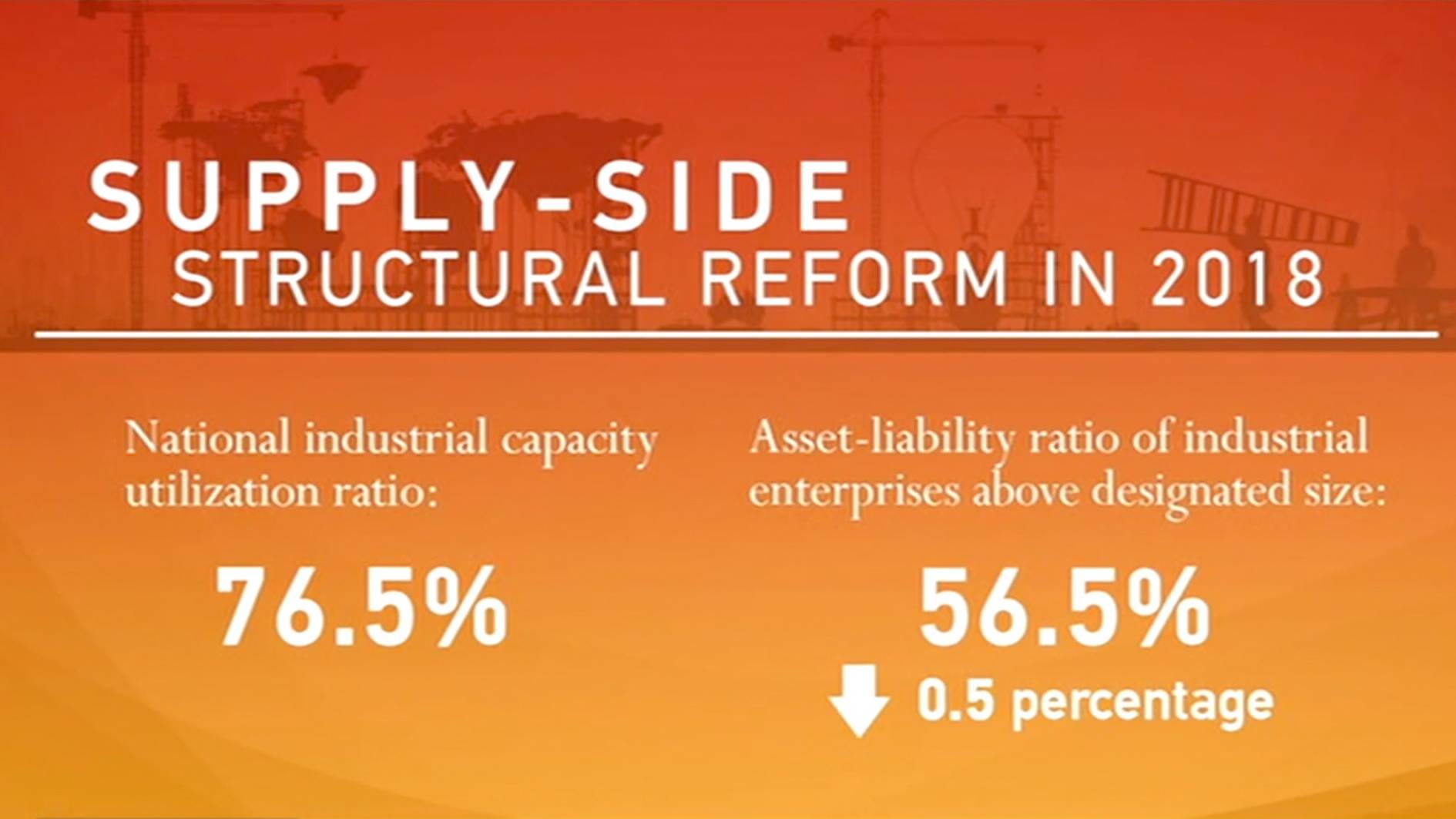
Biz Analysis
14:37, 08-Mar-2019
Supply-side structural reform key for China's high-quality growth
Updated
15:03, 08-Mar-2019
CGTN's Yi Shi
01:38

China's policymakers take supply-side structural reforms as one of the key factors for achieving high-quality growth.
The reforms were first mapped out in 2015. They're aimed at tackling problems like overcapacity and unbalanced economic stimulus.
The latest push for supply-side structural reform comes as China steps into a "new era" of development. The goal is to adjust economic structure and optimize resource allocation, to unleash latent productivity and achieve high-quality growth.
To get the job done, reformers are focusing on five key tasks. Specifically, they are cutting overcapacity, reducing excess inventory, deleveraging debt, lowering costs, and strengthening areas of weakness.
Last year saw China double down on these focus points. By trimming the fat around glutted sectors, Beijing managed to make use of some 76.5 percent of the country's industrial capacity. Deleveraging has been pushed forward steadily as well.
The asset-liability ratio of industrial enterprises above designated size stood at more 56.5 percent by the end of the year. That's half a percentage point lower than the year before.
There are also efforts to reduce the burden on businesses. Those measures include cutting the cost of taxes, financing, labor, logistics, and resources. Last year's reduction in taxes and fees alone topped 1.3 trillion yuan nationwide.
It's a reduction that's translated into profits. In 2018, earnings for certain industrial firms were 10.3 percent higher than the year before.
But it's not just traditional industries that are seeing results. The reforms have an innovative side, too. New technologies, new organizational forms, and new industrial clusters are all part of the blueprint as China's reform push continues to move from vision into action.

SITEMAP
Copyright © 2018 CGTN. Beijing ICP prepared NO.16065310-3
Copyright © 2018 CGTN. Beijing ICP prepared NO.16065310-3